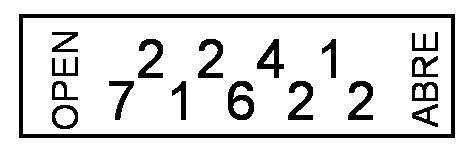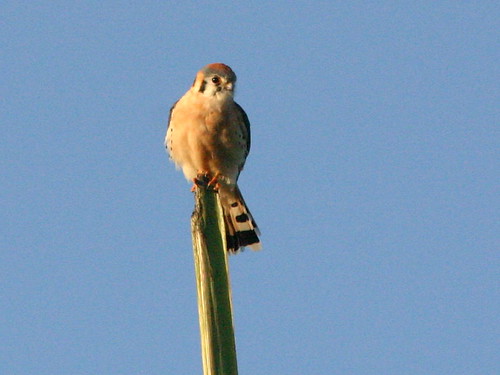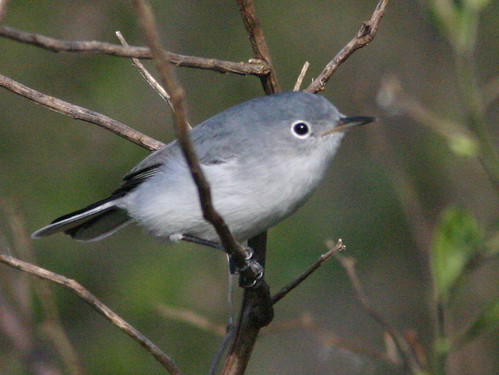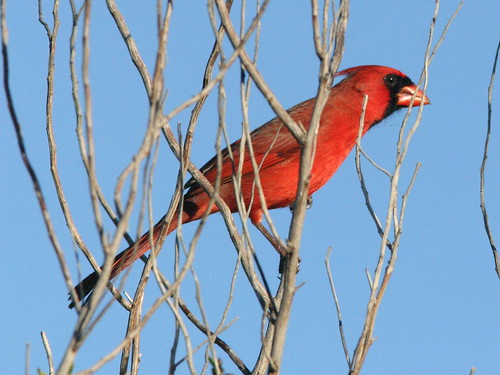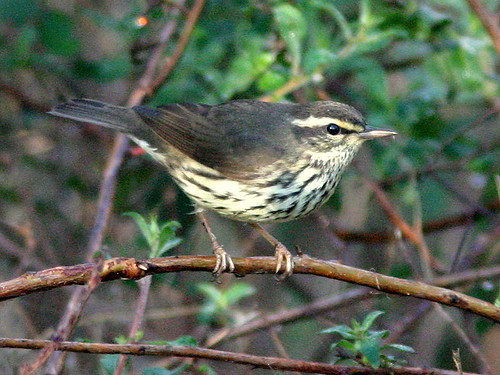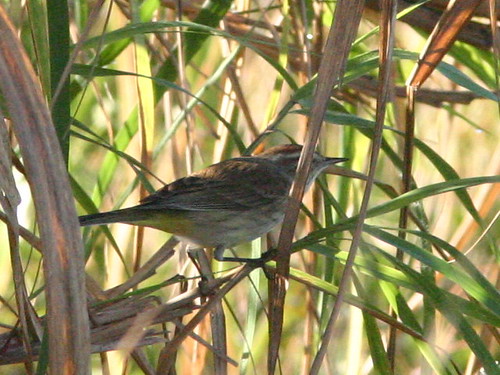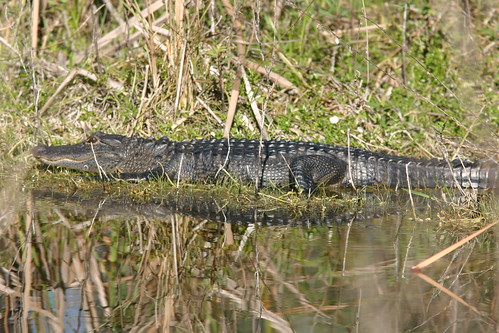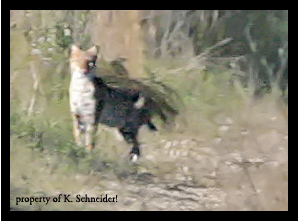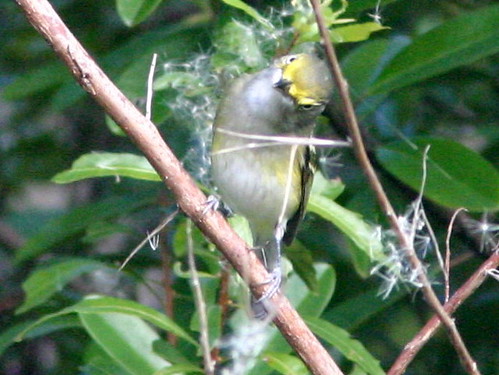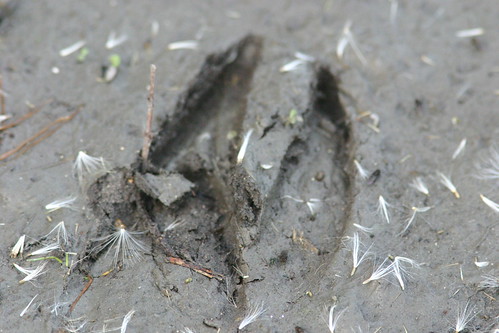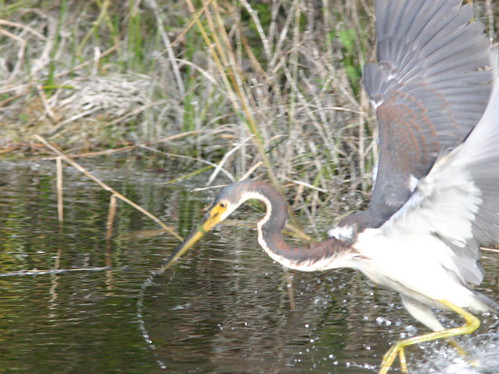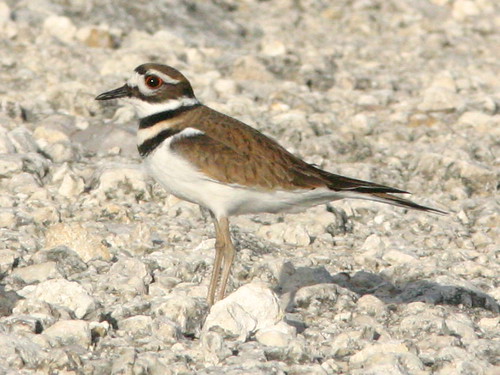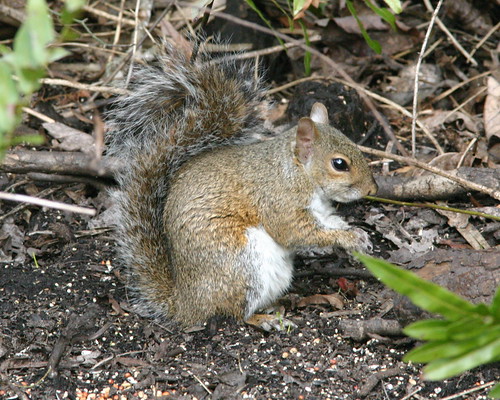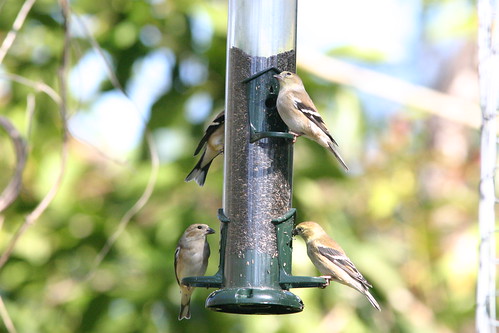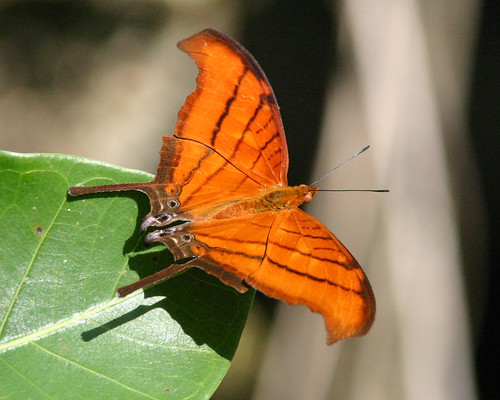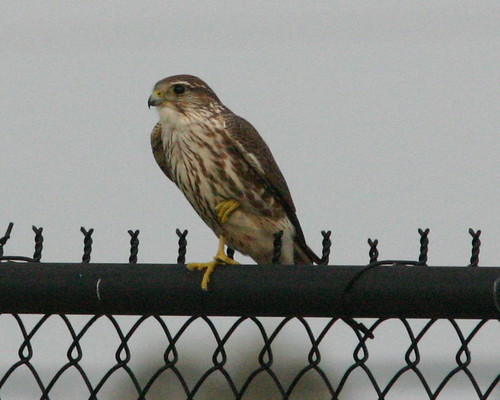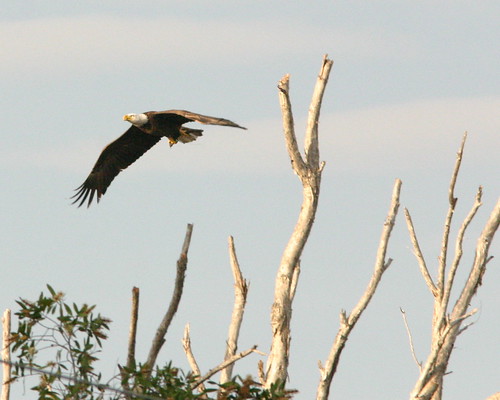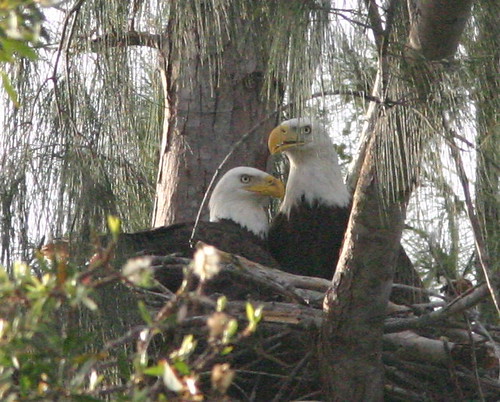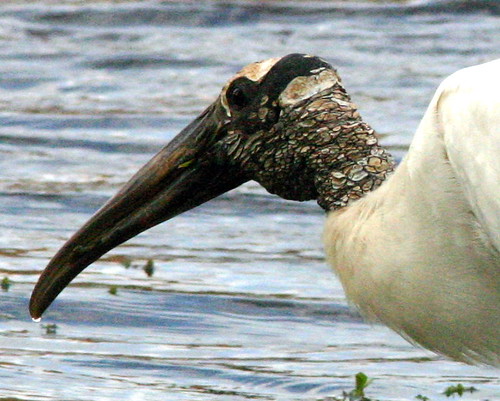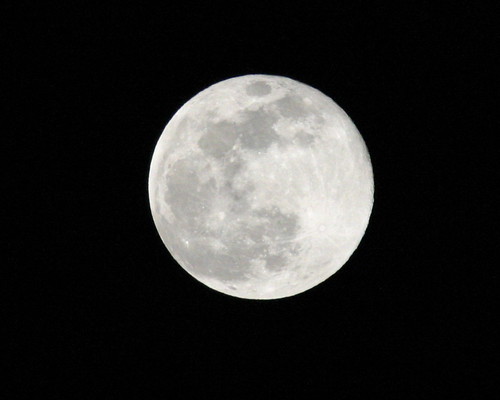Posted by: Ken @ 7:53 pm
At 7:30 this morning it was clear and there was no wind, so I slathered on the sunscreen and DEET in hopes of getting some good photos. My destination was my local birding “patch,” that begins on a gravel road only a block from our South Florida home, and ends about a mile into the West Miramar Environmentally Sensitive Land (ESL), a tract of recovering Everglades, formerly grazing land, that our developer had to set aside to mitigate the effects of draining and filling for our subdivision.
My main objective was to photograph a Grasshopper Sparrow, as I have seen three so far this month, but none provided me with a a decent photo op. On the way in, the actions of two pairs of Killdeer provided evidence that they may have selected nest sites on the shoulders of the gravel road. They called loudly and one gave a brief “broken wing” distraction ploy.
A kestrel eyed me warily from atop a Royal Palm:
After leaving the gravel road, I checked out a small patch of dry woodland, where Blue-gray Gnatcatchers frolicked (click on the photo to see this little guy stretch out):
Since the onset of the dry season, water levels have dropped a couple of feet, and I made my usual stop at a formerly marshy area, where Swamp Sparrows sometimes gather. The ground was now mostly dry, but there was a depressed area, not much more than a puddle, where small fish had been concentrated. Some were gasping for air and others were already dead.
I heard, but was unable to locate, a Carolina Wren as it tried to out-sing this Northern Cardinal:
While I was looking for the wren, a Northern Waterthrush suddenly appeared at the edge of the puddle, not 15 feet away from me (the yellow wash on its breast and eyeline help distinguish it from the less common Louisiana Waterthrush):
Palm Warblers were everywhere. Most are very drab, with only a little yellow on their rear ends, but this one had the brighter yellow underparts and chestnut cap of the Eastern race:
After following a levee about a quarter mile south, I turned to the west, towards the middle of the ESL, on a path that is muddy or underwater most of the rest of the year. The path had been created by the spoils of a small borrow ditch that parallels on one side. The ditch, flanked by thick shrubs, usually has water all year, and lots of fish when the wetlands dry up. Two 5 foot alligators were visible on the other side of the ditch, and I heard several others splash noisily into the water when I approached.
This one, about four feet long, continued basking as I took its picture:
In order to get an unobstructed view of the alligator from the edge of the ditch, I had to push (carefully) through the shrubbery. Two Cottonmouths (distinguished from other water snakes by their dark masks, vertical pupils, triangular heads, and their habit of swimming with their heads held high out of the water) swam slowly away from near my feet to the other side (click for additional view):
I never saw a Grasshopper Sparrow (or any other kind of sparrow, for that matter), but was thrilled to photograph my first Cottonmouths and alligators in my “patch.” The best was yet to come, when a good-sized cat suddenly appeared on the path about 150 yards behind me, as I was heading out. Initially, I thought it to be a coyote, then it moved to the side, revealing its heavy body and forepaws. I had to examine the photo closely to be sure it was a Bobcat and not a Florida Panther.
This photo is severely cropped from the original, but it shows the short tail, longer ears and the mottled front legs and chest that distinguish it from a panther (enhanced by DavidRaymond– thanks!):
Posted by: Ken @ 9:00 pm
 January 28: Flocks of up to over 100 rosy-finches of all three species are visiting Sandia Crest, New Mexico. Keep an eye on the weather and road conditions before setting out on the 13 mile climb to the top. Transmitters have been placed on some birds. Check out the links in rosyfinch.com for more information.
January 28: Flocks of up to over 100 rosy-finches of all three species are visiting Sandia Crest, New Mexico. Keep an eye on the weather and road conditions before setting out on the 13 mile climb to the top. Transmitters have been placed on some birds. Check out the links in rosyfinch.com for more information.
|
UPDATED ROSY-FINCH REPORTS
 Note: Temperature at Sandia Crest (10,678′) is usually about 11 degrees cooler than at this station in Cedar Crest (7100′). Click on icon for full Sandia Mountain weather outlook. Note: Temperature at Sandia Crest (10,678′) is usually about 11 degrees cooler than at this station in Cedar Crest (7100′). Click on icon for full Sandia Mountain weather outlook.Note from Feeder Project Coordinators
Date:January 28, 2009
From: Fran Lusso and Dave Weaver Hi Ken, Just back from the Crest - the road is clear with only an occasional icy patch from a bit of icy snow that blew through yesterday. The temperature was about 10 degrees with a strong wind - probably 30-40mph. Brisk! The log is attached.Best regards, Fran & Dave Latest Report from Rosy-Finch Banding Team: [We received the sad news that Steve Cox’s father passed away on January 24. We extend our condolences to Steve and his family. Carol Davis was in charge of the rosy-finch banding, and provided the report to Nancy. ] Date: January 25,2009 From Nancy Cox Hi all, Our crew banded only eleven Rosy-Finches today. Ten were Brown-capped and one was an interior Gray-crowned. Black Rosy-Finches were present but none were captured by the team. All three of the birds that were outfitted with transmitters last week were heard this morning. Link to updated banding spreadsheet Nancy = = = = = Date: January 18, 2009 From: Nancy & Steve Cox Hi all, Today we got to put transmitters on 3 birds (one of each species). It was very exciting and we were able to refind the Gray-crowned Rosy-Finch approximately 1/4 mile south of the Crest House around 4 p.m. The Black Rosy-Finch was west of the Crest House at 4:30 p.m. We also had the Brown-capped an hour after we banded it with a flock of Rosy-Finches near the Crest House. We newly banded 24 birds. There were 17 Brown-capped, 5 Blacks and 2 Gray-crowned (both were interiors). We had a lot of volunteers today as well as two Audubon groups from Texas (Dallas/Fort Worth and El Paso). Thanks for being so patient with the whole process. It was a nice day. The road was clear but we are hoping for snow during the week. …We had a lot of fun today with finally getting to put transmitters on the birds. We didn’t stay as long as planned but it was still a long day. They are going to try to do some more transmitter work throughout the week. Nancy & Steve Other Sightings
From NM RBA:
Bill Wittman on January 9 had a female AMERICAN THREE-TOED WOODPECKER and two GOLDEN-CROWNED KINGLETS at the Crest. John Parmeter saw the THREE-TOED on January 11 just below the trail to the Kiwanis Meadows. |
We have started a new Web page to document our Florida neighborhood “urban eagles,” now tending to one or more nestlings, the first of which hatched on January 17th:
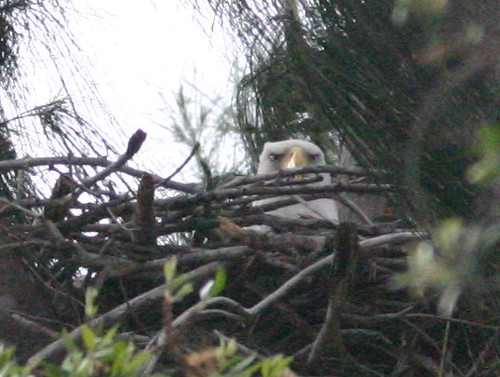
If you live in New Mexico, or have been following the links to correspondence and live Web camera views on rosyfinch.com, you are well aware that the Sandia Mountains have received significant snowfall. The sun often returns quickly after a storm, and the lower elevations dry out pretty quickly. The road up to Sandia Crest, though plowed, may be hazardous with icy patches and drifts of blowing snow, so please check the links to weather and road conditions and drive carefully.
Good flocks of all three rosy-finch species (including both the interior and coastal races of the White-crowned) have been visiting Sandia Crest since mid- November, and there has not been a single day when observers, who spent more than a few minutes there, recorded a failure to see the species at the Crest House feeders. The snow storms may have been a factor in finally bringing the rosy-finches back to the Kandahar Condominiums in Taos Ski Valley. Taos is 120 miles to the northeast of Albuquerque, and the birds usually get there earlier and remain later than at Sandia Crest. Inexplicably, the finches appeared at TSV more than a month later than at Sandia Crest.
Here in Florida, we are putting up with cool nights and daytime temperatures in the high 70s. On some morning walks, the easterly breezes feel downright cold, but instead of winter finches, we have to settle for back yard herons and Wood Storks.
Fishin’ Buddies, a Snowy Egret and a Pied-billed Grebe share a school of fish at the edge of our back lawn:
Quite a soggy little grebe: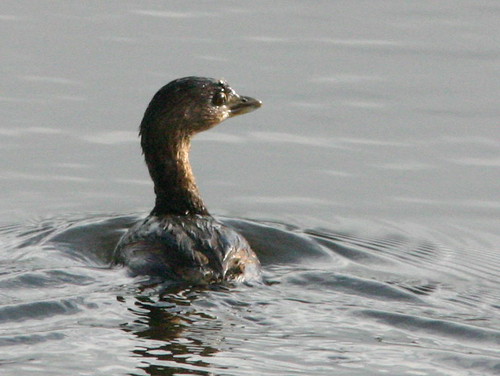
A couple of days earlier, this Tricolored Heron was also following the grebe around the lake shore: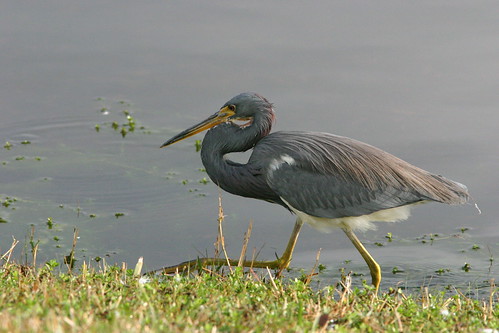
A Great Blue Heron is keeping me in view:

Wood Storks feeding in tandem:

I used to think that the Wood Stork shaded the water to better see its prey, but it actually fishes by touch rather than sight. Small fish are said to gather and concentrate in the shade of its outstretched wing: 
In our local patch of recovering Everglades, I encountered this White-eyed Vireo who had an attitude:
The vireo was singing loudly, but was well-hidden until it finally decided to pose for pictures: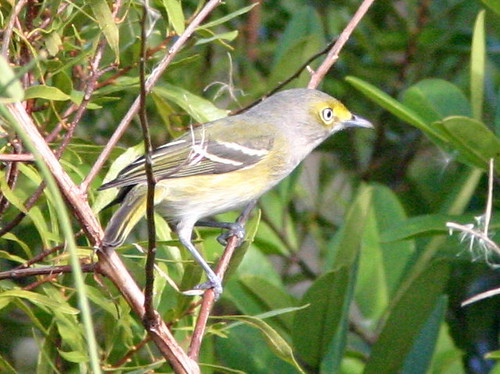
Prairie Warblers also winter in our neighborhood:
See our latest general Blog post here.
Posted by: Ken @ 9:49 pm
Our neighborhood birding “patch” underwent quite a transformation overnight. It seems that one or more plant species have released innumerable wind-borne seeds. The air was full of them, and the ground was evenly covered with white fluff, which drifted like snow and coated the surface of the water in the borrow ditch that runs along the path.
Here is one of the plants that is spewing downy seeds (species unknown):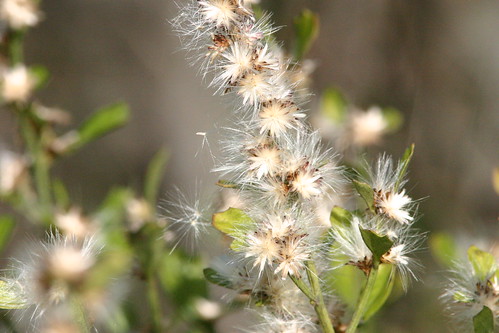
These fresh deer tracks are surrounded by the seeds:
I found this oddly shaped and colorful little Spiny Orb Weaver spider Gasteracantha cancriformis). It was fighting a losing battle with the seeds. Its web was loaded with them, and it worked feverishly to remove them. The spider would gather three or four seeds at a time, roll them into a loose ball, and then cut them free, to drift away with the wind. In the meantime it appeared to be repairing the holes thus created in its orb web.
However, new seeds were sticking in its web much faster than the spider could remove them. This is a view of the spider’s back– click on photo to see its underside: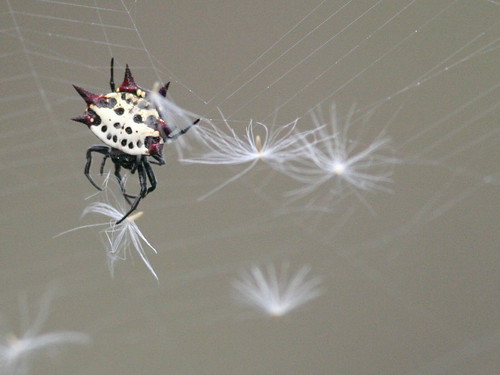
With the approach of the winter dry season, water levels have decreased by 2-3 feet so far. Fish that formerly had access to the sawgrass wetlands now are concentrated in the ditches. This attracted several herons. Today I saw Great Blues, Little Blues, and Tricolored Herons, Black-crowned Night-Herons, Snowy and Great Egrets, as well as an Anhinga, all crowded into a quarter-mile stretch of a ditch that measured only about 10 feet across.
This Snowy Egret hunted with typical stealth:
A Tricolored Heron treated me to quite a show. When feeding, these herons can be very hyperactive. Though they are no match for the feeding antics of the Reddish Egret, they seem hilariously nervous and unpredictable as they dash here and there, back-tracking, splashing and making short flights as they sight prey.
Here the Tricolored Heron lunges for a fish (click on photo for additional views:
This heron was so intent on fishing the it allowed me to approach quite closely, almost too close for my long lens. It was working both sides of the ditch, and seemed unable to decide which side was best. It flew back and forth. Several times, on the wing, it tried to pluck unseen prey from the surface of the water. Once, it even settled on the water and swam bouyantly for a few seconds, looking very top-heavy.
This was about the best shot I could get of it acting like a kingfisher, dragging its feet in the water as it strikes the surface with its bill (click on photo for another view):
White Peacock butterflies were numerous:
Two pairs of Killdeer had returned to the shoulder of the gravel road where they have nested the past couple of years.
One pulled its “broken wing” act to distract me, suggesting that nesting activity may soon be underway, but I missed the photo-op (click for additional view):
One bird that has eluded Mary Lou has been the Painted Bunting. It is almost in the class of the Elegant Trogan, the bird that got her started in birding (See; “How Mary Lou Became A Birder”). We seemed to always just miss the bunting– not only in Florida, but several times in New Jersey, Georgia and New Orleans. Although we have had goldfinches at our backyard feeder, we never attracted a Painted Bunting, probably because our property is land newly “reclaimed” (I hate that term– “”robbed” or “stolen” is more apt) from the Everglades, covered with lawns, concrete and exotic plantings.
We knew the bunting hung out at Corkscrew Swamp most of the winter, and we traveled there several times, but always with non-birding friends and relatives. We would wait at the feeders and grow ever more conscious of their impatience and of our obligation to walk the boardwalk and see the the bigger furry and feathery attractions with them. This past week we again took some non-birding visitors there, without great expectations, but we finally lucked out, and Mary Lou got her 503rd “lifer.”
Right off the bat, the first bird we saw was this very cooperative Pileated Woodpecker (click for more views):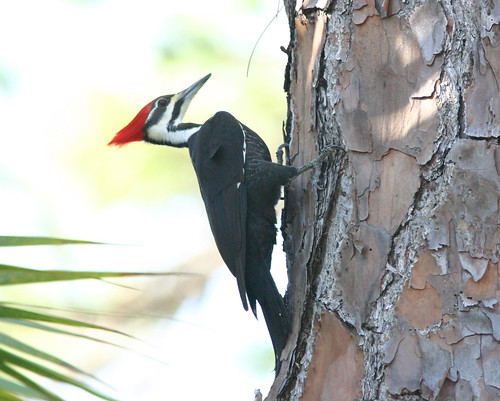
A young raccoon eyed us as we gazed back at it from the boardwalk:
The feeders, where we hoped to find our bunting, were , at first, deserted, except for a Gray Squirrel in the underbrush:
We did see a Northern Cardinal and a White-throated Sparrow near the squirrel, but they both disappeared before my shutter clicked. I was surprised to learn, from Vince Lucas, an experienced local birder, that this was the first time the latter species had ever been recorded in Collier County! But we had a higher objective in mind.
Then, American Goldfinches appeared at the feeder:
Within ten minutes, we were treated to the arrival of a male Painted Bunting (High Fives all around!!):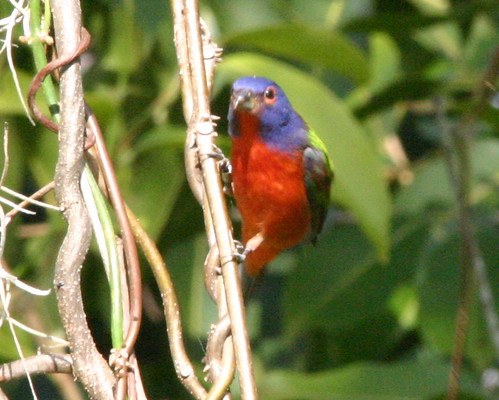
This is a Ruddy Daggerwing– click and scroll down to see an example of its host plant (PG-13):
Back home, we visited wetlands in Pembroke Pines. I remarked to Mary Lou that I really wanted to get a photo of a Purple Swamphen before they are extirpated, er… exterminated. Although they were quite numerous when we arrived in Florida about 4 1/2 years ago, they have become increasingly scarce. In fact, I had not even seen one since I obtained my SLR camera this past spring. Exotic birds from Asia, they have increased exponentially since their accidental introduction into Florida, and have been determined to pose a threat to the native biota. For more about the extermination program, see my post on “Trash Birds.” They look like very large and muscular Purple Gallinules.
Amazingly, not five minutes later, we spotted two Purple Swamphens. One posed briefly before flying off (click on image for close up view of head):
An unexpected treat was this Merlin, perched on a fence at Chapel Trail Nature Center in Pembroke Pines (again, click for larger and additional views)::
Early the next morning, we stopped by our local Bald Eagle nest, and saw this eagle bringing sticks:
Its mate had preceded it, carrying a much larger branch (but I have not mastered the skill of flight photography and oly captured several blurred images). They proceeded to the nest, where one of the pair worked on the nest for several minutes, while the other stood watch. Then, they touched beaks, and the bird that had been on guard flew off. The other settled down and almost disappeared from sight inside the cup of the nest. This morning only one bird was on the nest for a protracted period, possibly laying or incubating eggs.
The bird on the right was standing watch. Perhaps it is the male:
Back home this evening, a Wood Stork (I almost typed “Wood Ibis,” showing my age!) slowly walked along the edge of our lake, and I got several photos of it from our back patio. Click for larger additional views):
This evening, December 12, 2008, the Moon made its closest approach to Earth this Century:
 The flag is waving, and flocks of up to 50 rosy-finches of all three species, including both the interior and coastal (Hepburn’s) races of the Gray-crowned Rosy-Finch, are now visiting the feeders at Sandia Crest House just east of Albuquerque, New Mexico. Banding operations are underway on most Sunday mornings. See rosyfinch.com for more information, current sighting reports and correspondence.
The flag is waving, and flocks of up to 50 rosy-finches of all three species, including both the interior and coastal (Hepburn’s) races of the Gray-crowned Rosy-Finch, are now visiting the feeders at Sandia Crest House just east of Albuquerque, New Mexico. Banding operations are underway on most Sunday mornings. See rosyfinch.com for more information, current sighting reports and correspondence.
|
PHOTOGRAPHERS, PLEASE NOTE:
December 12, 2008 addendum– This post contains important information and suggestions that are intended to increase everyone’s enjoyment of the rosy-finches at Crest House. Please also read the two letters in the Comments section, at the end of this page. Thanks!
|
Photographers were in the spotlight at Sandia Crest House this week. First the Bad and the Ugly, and I will save the Good (and beautiful) for last.
Some patrons, probably birders, complained that their view was obstructed and the birds were being frightened away by photographers who stationed themselves on the deck. As those of you who have seen my “Cedar Crest Back Yard Birds” photos know, my bird photography in the past consisted of digiscoping through our great room windows with a point-and-shoot Canon A40 aligned with my Kowa scope by an adapter fashioned from a Durkee’s spice container. I obtained my first long (420mm) lens system this past spring, shortly after my son-in-law gave me a used Canon Digital Rebel EOS camera body. Though I thought my old fuzzy images were just wonderful, now I pay close attention to eye shine and feather detail in my avian portraits.
(c) 2008 Ed Ruden
On my recent visit to New Mexico, I was one of the transgressors. I positioned myself in the far left (SW) corner of the Crest House deck and braved the elements to get the photos published in this recent Blog post. True, I knew there were birders inside who were also enjoying the rosy-finches as a flock of 30 or so descended nervously on the feeders and departed all too soon. I was about 20 feet from the feeder, and some of the finches came within about 5 feet– so close that I had to switch to a macro setting to photograph them. Their skittishness was normal behavior for early-season Rosies, I assured myself, and was confident that I did not cause a disturbance. This well may have been true, but perceptions are important, and perhaps some non-avian feathers were ruffled.
While eating some humble pie, I made the recommendation (see the recent correspondence on this subject
Ah, but now the Good! Even before the banders started their operations this weekend, a photographer “recaptured” a Black Rosy-Finch that had been banded at Sandia Crest a little over three years ago. Ed Ruden (Website) carefully cropped and enlarged the band on one of the birds he had photographed, and reconstructed the band number. Here is the sequence of photos that he used, and the graphic he produced, a replica of the band placed on the bird by the Rio Grande Bird Research team on November 27, 2005.
Here is what Ed saw on each of his images–
ABRE across, 2 along bottom:
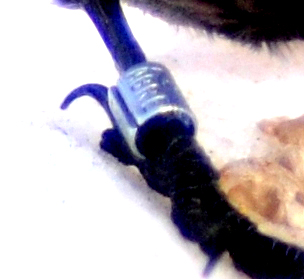
22 along bottom, 41 along top, ABRE across:
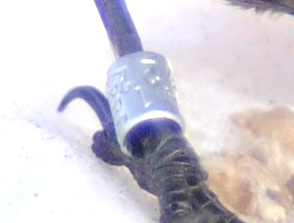
OPEN across, 2 along top, 7 along bottom:
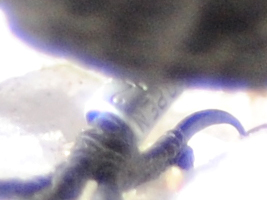
OPEN across, 22 along top, 716 along:
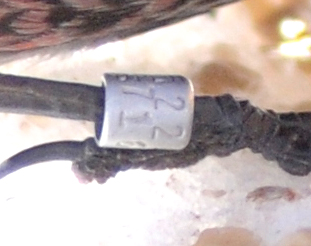
22 along top, 716 along bottom:
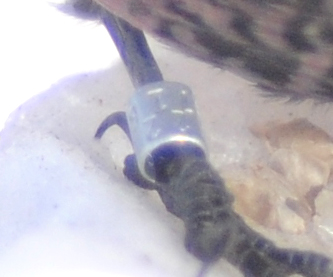
622 along bottom, 41 along top:
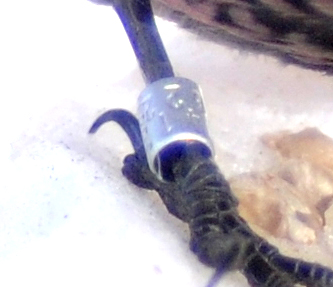
band along bottom, 41 along top:
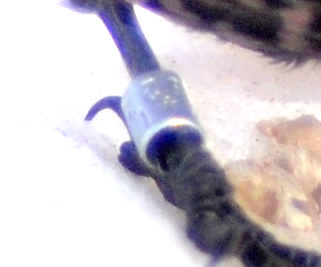
Putting it all together, this is Ed’s product, and it was a perfect match: